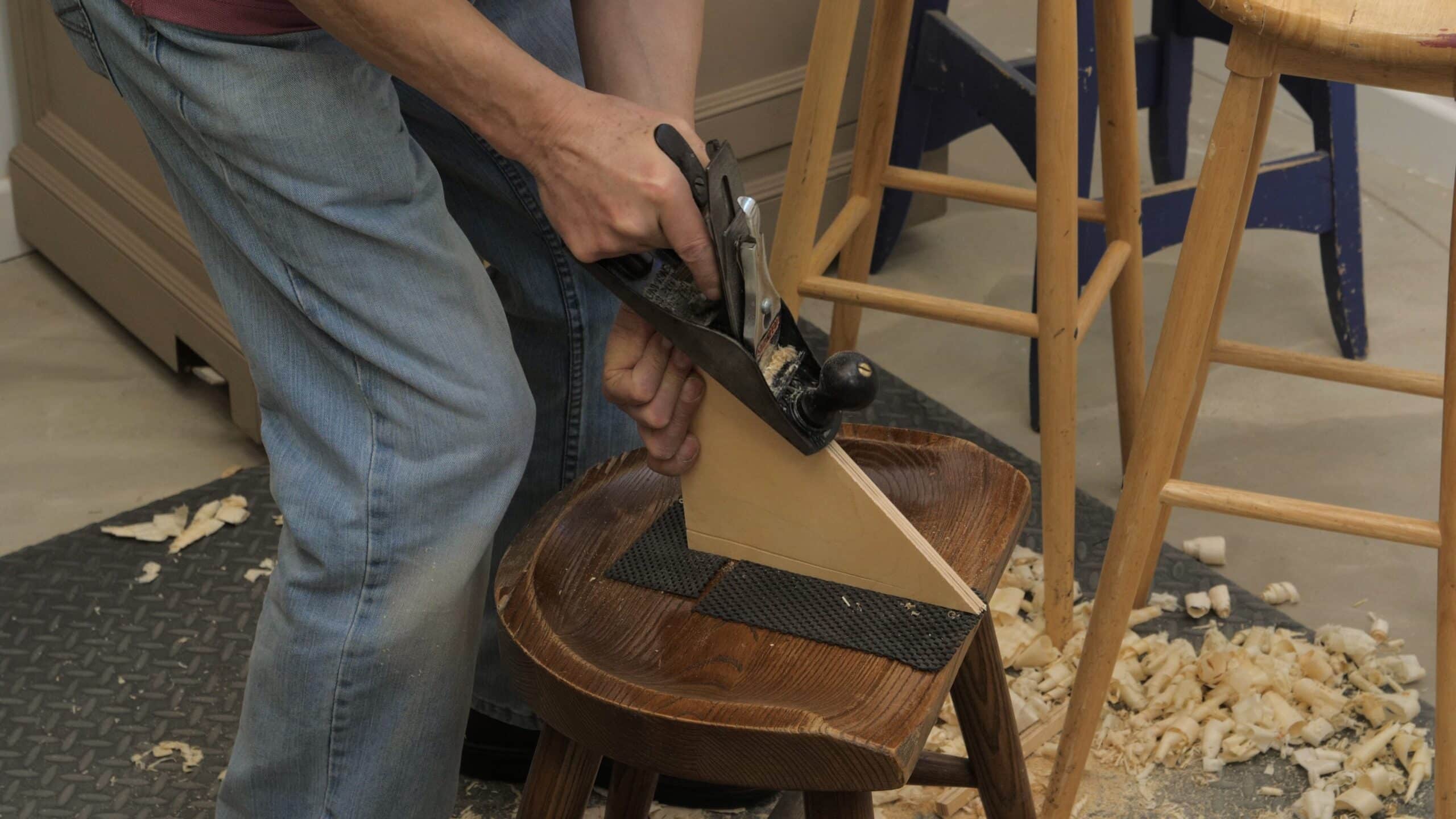Trestles: Episode 1
This is an episode in a paid series. Want to watch it? You just need to sign up as a paid member, and you can enjoy this video and many other videos we think you will love.
These handy trestles have a myriad of uses. They are made from construction materials, so Paul starts by planing the surfaces to remove surface irregularity. Then the gussets are cut to size and drilled ready for fitting.
If you’re looking for a crosscut saw, See our video where Paul compares a few options for handsaws that are available here.


For the stock preparation, you didn’t mention twist — I was surprised not to see your favorite winding sticks. A lot of the wood I find in hardware stores has some bad twists. Do you think that matters?
Paul already showed how to make some very nice winding sticks in one of his youtube videos.
I picked up a very nice, old pair of winding sticks at a carboot sale recently (can’t recall if they were 50p or free – the seller was impressed that I knew what they were for – thanks Paul 😉 – and keen that I should have them!). They appear to me to be made of rose-wood; one is inlaid with a strip of pale wood and the other with a strip of very dark wood (ebony). I would guess that the original owner (whose name is stamped in them) made them as an apprentice exercise and then used them throughout his career (and perhaps passed them on thereafter?).
That happens to me also. That stuff laying there loose has already been gone through so many times so you’re actually about to do is buy somebody else’s culls unless you get into a fresh pallet. I wouldn’t think a little twist is going to matter except from an aesthetic standpoint. Even twisted, they’re still going to be trestles. Just eyeball a few fairly straight ones. I really think Paul just didn’t want to lay down on the floor to use his winding sticks 🙂
You do want to avoid overly twisted stock if possible. Paul sighted it to make sure he had straight stock, but nothing further than that is needed.
Was this series not posted before? Perhaps it was on YouTube or something but I’m positive I’ve seen this before
Perhaps you’re thinking of the saw horse series?
You’re probably right, my mistake.
I would have thought all the people who subscribe to Masterclass would have a workbench?
I don’t ☺
Sorry to disagree, I sold a Stanley number 4 (via eBay) to a young man working off his mothers kitchen table on the 6th floor of a block of flats in Tel-aviv AND HE WAS ON MASTERCLASS
I was a subscriber way before I had a bench, or even space to have one…
Hi! Wanted to double check if this is a mistake on your side or I miss something: in the cutting list there’s a gusset part and a drawing how to cut it to eight pieces, but if I count the number of triangular pieces on the trestle there’re twelve of them. Obviously from the given information I can derive how much more plywood I need for four additional triangles, just wanted to double check if you’re aware of the inconsistency 🙂
Thanks for the project I was waiting for this one for some time, now it’s time to build a couple of them!
You are correct, it does require 12. We will get the drawing and cutting list changed asap.
Many thanks, Phil
super easy. i like it 🙂
wow! the Spear and Jackson saw in the video has gotten expensive. any suggested alternatives?
This has become know as the “Paul Sellers effect”. While Paul does not do product reviews and promo’s for product or vendor, when he does recommend something he likes it tends to get really expensive fast.
Other than appearance, is there a difference between this and a saw horse?
The main difference, for me, between something I made to be a saw horse & something I made to be a trestle would be the height of the finished piece: a saw horse I’d make to the height of the bottom of my knee cap, so I could hold the workpiece with my knee & still get a full saw stroke in when cutting the workpiece; a trestle I would make to the height of my wrist, so I could plane, clamp, saw, glue, etc. comfortably when stood up.
It’s really stability. A four legged saw horse is inherently stable and won’t wobble around so much when you’re cutting. A pair of them are perfect for cross cutting longer stock. Trestles are more for supporting things around the shop. You can throw a piece of plywood on them for a temporary assembly table and things like that. There’s a third item that I don’t think I’ve seen Paul do yet which is called a saw bench and those are normally used for ripping, but You can make rip cuts on a saw horse too.
My first time watching a Paul Sellers’ video. I really enjoyed it! Thank you Paul!
Looking forward to making them,look easier than than the saw horses.